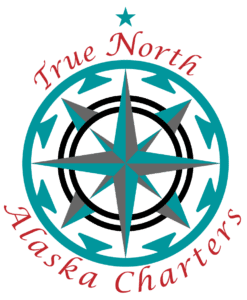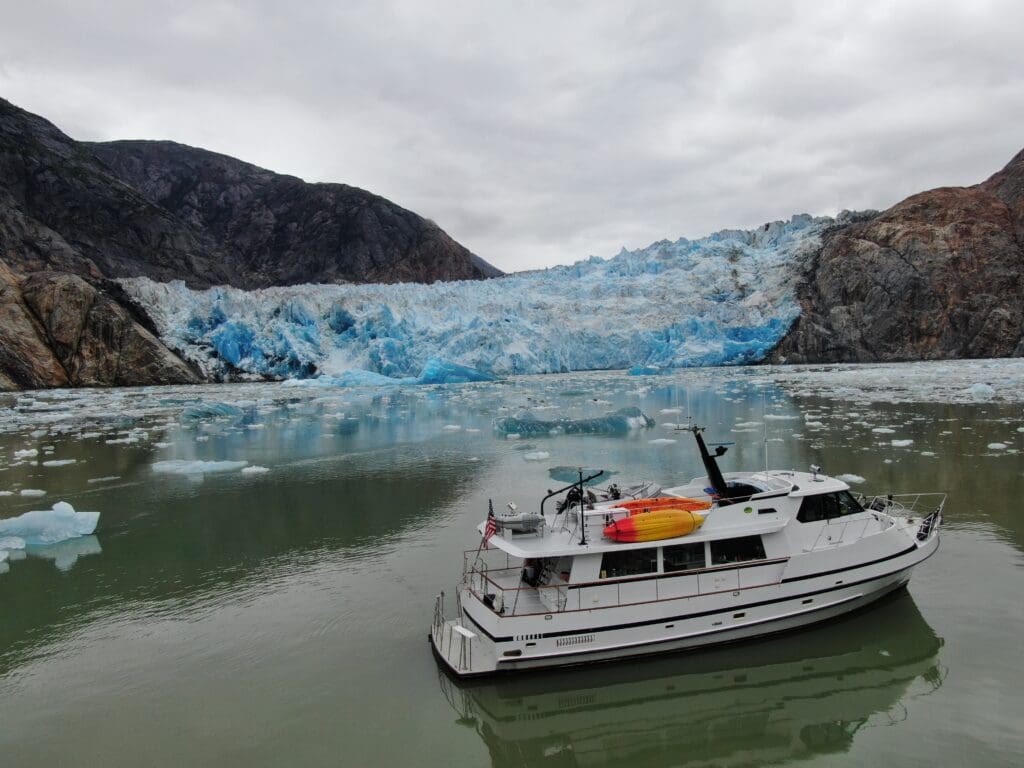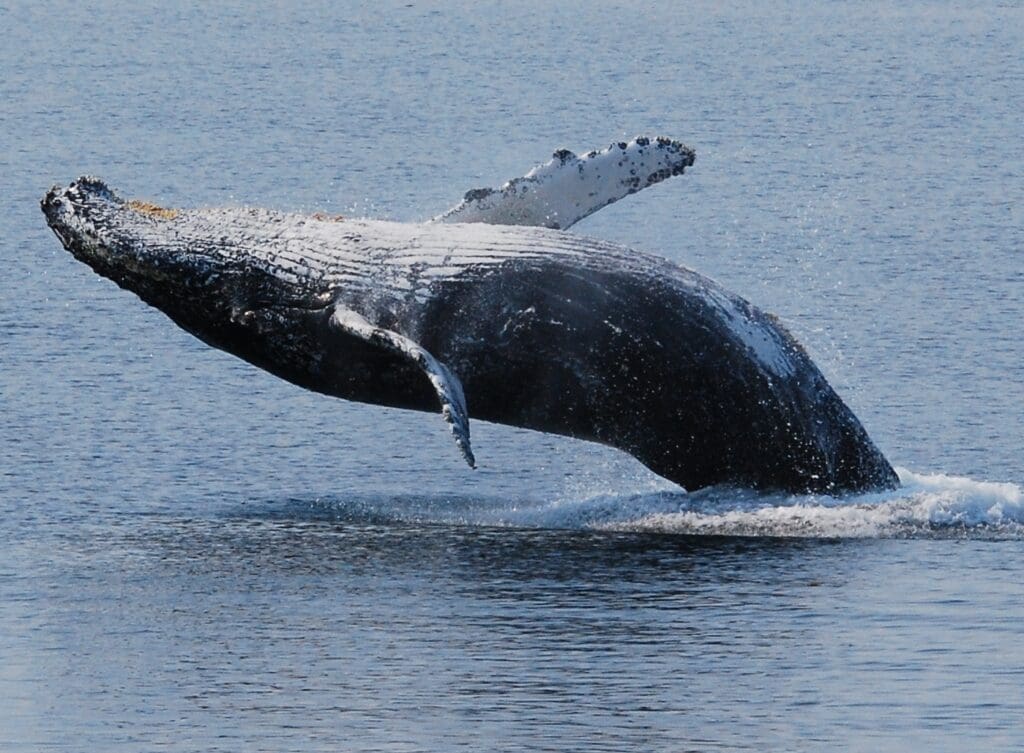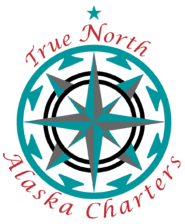Experience Alaska as few others have...
If a glacier is fed by enough snow to flow out of the mountains and down to the sea, we call it a tidewater glacier—the type many people come to Glacier Bay and Kenai Fjords to see. These types of glaciers will break off or calve into saltwater at sea level, and a few others that reach the sea at high tide only. The show can be spectacular. As water undermines some ice fronts, great blocks of ice up to 200 feet high break loose and crash into the water.
Orcas, also known as killer whales, are among the world’s most easily recognized marine mammals. The largest member of the dolphin family, orcas are highly intelligent and social animals, spending their lives in groups or pods where they hunt together and share responsibility for raising young and taking care of the sick or injured.
Adult orcas have shiny black backs, white chests and patches of white above and behind their eyes. They have paddle-shaped pectoral fins and tall triangular dorsal fins. Their distinct coloring mean they are easy to identify and rarely confused with other dolphins or whales. Orcas vary in size depending on where they live. Adult males are larger than adult females, with males reaching 32 feet (10 meters) in length and females growing to 28 feet (8.5 meters).
humpback whale, (Megaptera novaeangliae), a baleen whale known for its elaborate courtship songs and displays. Humpbacks usually range from 12 to 16 metres (39 to 52 feet) in length and weigh approximately 36 metric tons (40 short [U.S.] tons). The body is black on the upper surface, with a variable amount of white below, and it has about 30 broad ventral grooves on the throat and chest. This cetacean is distinguished from other baleen whales by its long, narrow flippers, which are about a third as long as the body and scalloped on the forward edge. Humpbacks also have large knobs on the head, jaws, and body, each knob being associated with one or two hairs. The dorsal fin is small and set far back on the body.

Southeast Alaska is truly ‘The Last Frontier”.
Between the steep mountains of British Columbia and the stormy waters of the Pacific is a region known for its jagged coastline, mountainous landscape, lush rainforests, varieties of wildlife, routinely moody weather and culturally rich island communities. Although the region’s most populated cities Juneau, Ketchikan and Sitka provide easy access for visitors seeking a comfortable and relaxing vacation, there is no shortage of remote villages and terrain for the adventure oriented traveler to explore.
Home of the indigenous peoples, Tlingit, Haida, Tsmishian and Eyak, and with over 35,000 miles of deep forests, towering mountains and rugged coastlines, Southeast offers endless opportunities to get off the beaten path to experience a truly authentic version of Alaska’s unique land and culture.
The Tongass is the nation’s largest national forest and covers most of Southeast Alaska, surrounding the famous Inside Passage and offers unique chances to view eagles, bears, spawning salmon, and the breath-taking vistas of “wild” Alaska. Hike or take a sled-dog ride on a glacier, stroll along boardwalk trails, learn about fisheries management, fish in streams or the ocean, or relax at a remote cabin. If spying some truly wild wildlife is on your bucket list, visit the Mendenhall Glacier Visitor Center and Steep Creek Bear Viewing area in Juneau, Anan Wildlife Observatory in Wrangell, Fish Creek Bear Viewing Area in Hyder, or Pack Creek Brown Bear Viewing Area on Admiralty Island, or immerse yourself in native culture at the stunning Southeast Alaska Discovery Center, located just steps away from the cruise ship docks in downtown Ketchikan.




